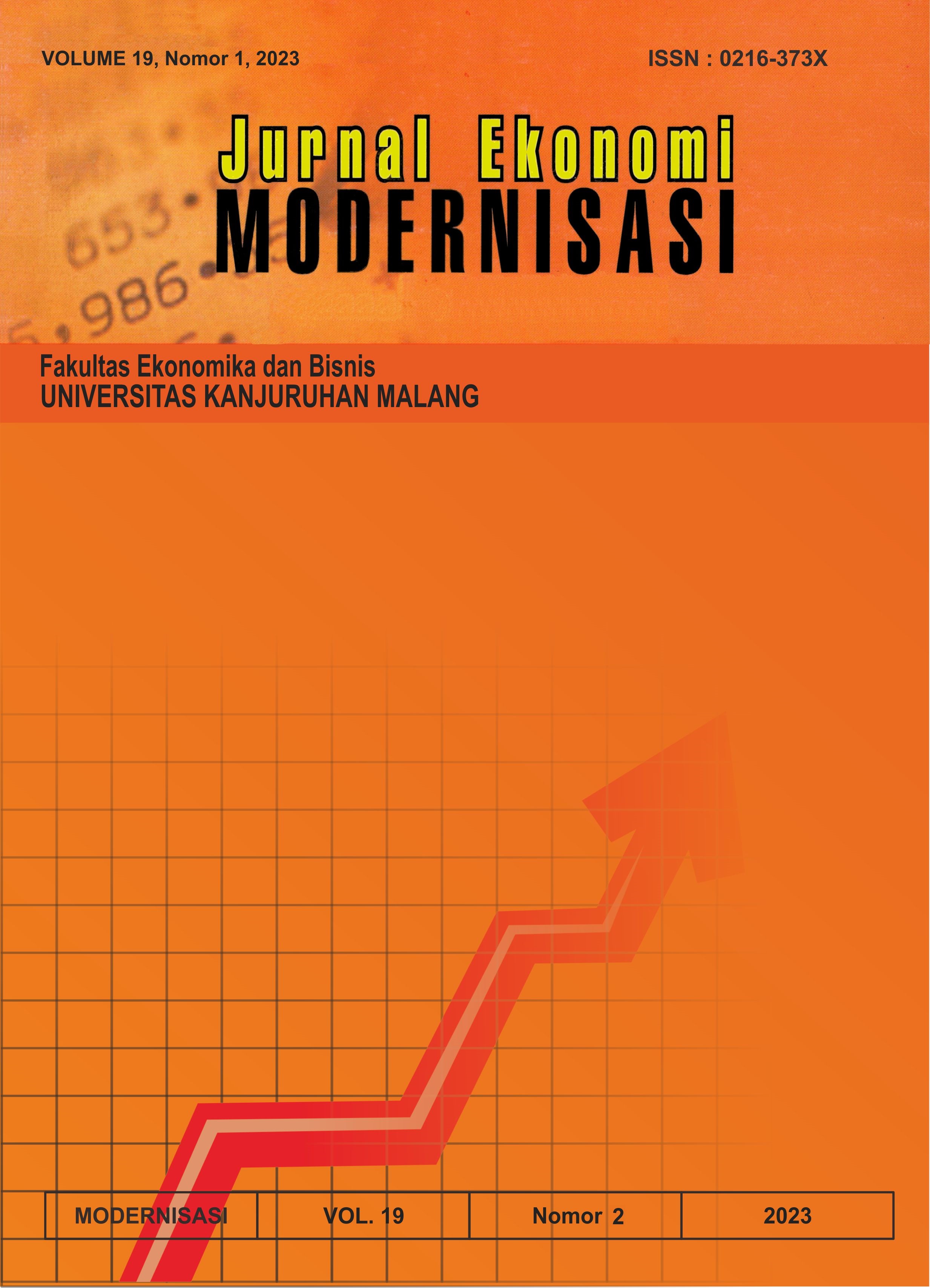The quality enhancement system improvement using the ANFIS method for segmentation of lecturer performance
Main Article Content
Abstract
Lecturers play a crucial role in developing skilled human resources. Classifying lecturer performance is believed to enhance the internal quality assurance system in the learning process and boost the scientific transformation process for students. This research aims to assess the effectiveness of using ANFIS as a classification approach for evaluating a lecturer's teaching ability. The study utilized a quantitative research method to evaluate the teaching performance of lecturers and a qualitative research method to analyze the internal quality assurance system at Universitas Muhammadiyah Jakarta. This study intends to use ANFIS to analyze instructor performance and pinpoint opportunities for enhancement in the college's internal quality assurance system. The study's findings suggest that ANFIS is an appropriate method for categorizing lecturers' performance, with an accuracy rate of 0.5. The insights can help pinpoint areas for development and guide actions to enhance the quality of education offered by the college. The study highlights the importance of using sophisticated approaches such as ANFIS to achieve continuous improvement and quality assurance in higher education institutions.
Downloads
Article Details

This work is licensed under a Creative Commons Attribution-ShareAlike 4.0 International License.
Authors who submit a manuscript understand that if the manuscript is accepted for publication, the copyright of the article shall be assigned to Jurnal Ekonomi Modernisasi (JEM).
References
Aburizaizah, S. J. (2022). The role of quality assurance in Saudi higher education institutions. International Journal of Educational Research Open, 3. https://doi.org/10.1016/j.ijedro.2022.100127
Adedoyin, O. B. (2020). Quantitative Research Method Assignment. Near East University, 20(13), 8. https://www.researchgate.net/publication/340594619_Quantitative_Research_Method
Afriliana, I., Budihartono, E., & Maulana, A. (2017). Pengukuran Kinerja Dosen Menggunakan Metode Adaptive Neuro Fuzzy Inference System (ANFIS). Jurnal Informatika: Jurnal Pengembangan IT, 2(2), 109–112. https://doi.org/10.30591/jpit.v2i2.609
Alzafari, K., & Ursin, J. (2019). Implementation of quality assurance standards in European higher education: does context matter? Quality in Higher Education, 25(1), 58–75. https://doi.org/10.1080/13538322.2019.1578069
Apriliani, D., & Somantri, O. (2019). Implementasi Metode Promethee Dalam Sistem Pendukung Keputusan Penilaian Raport Dosen. Jurnal Informatika: Jurnal Pengembangan IT, 4(1), 38–42. https://doi.org/10.30591/jpit.v4i1.1251
Bendermacher, G. W. G., oude Egbrink, M. G. A., Wolfhagen, H. A. P., Leppink, J., & Dolmans, D. H. J. M. (2019). Reinforcing pillars for quality culture development: a path analytic model. Studies in Higher Education, 44(4), 643–662. https://doi.org/10.1080/03075079.2017.1393060
Cao, Y., AlKubaisy, Z. M., Stojanović, J., Denić, N., Petković, D., Zlatković, D., & Zakić, A. (2022). Appraisal of information and communications technologies on the teaching process by neuro fuzzy logic. Computer Applications in Engineering Education, 30(3), 779–802. https://doi.org/10.1002/cae.22486
Fitrah, M., Ruslan, ., & Hendra, . (2018). Urgensi Sistem Penjaminan Mutu Internal Terhadap Peningkatan Mutu Perguruan Tinggi. Jurnal Penjaminan Mutu, 4(1), 76. https://doi.org/10.25078/jpm.v4i1.400
Herni. (2022). Manajemen Sistem Penjaminan Mutu Internal (SPMI) Dalam Meningkatkan Mutu Lulusan Perguruan Tinggi. Al-Afkar, Journal For Islamic Studies, 281–289. https://doi.org/10.31943/afkarjournal.v5i4.380
Jang, J. S. R. J. (1993). ANFIS: Adaptive-Network-Based Fuzzy Inference System. IEEE Transactions on Systems, Man and Cybernetics, 23(3), 665–685. https://doi.org/10.1109/21.256541
Mishra, S., Sahoo, S., & Mishra, B. K. (2019). Neuro-fuzzy models and applications. Emerging Trends and Applications in Cognitive Computing, 78–98.
Pawan, E., Thamrin, R. H. ., Hasan, P., Bei, S. H. Y., & Matu, P. (2021). Using Waterfall Method to Design Information System of SPMI STIMIK Sepuluh Nopember Jayapura. International Journal of Computer and Information System (IJCIS), 2(2), 33–38. https://doi.org/10.29040/ijcis.v2i2.29
Pȩkala, B. (2019). Introduction to Fuzzy Sets. Studies in Fuzziness and Soft Computing, 367, 1–20. https://doi.org/10.1007/978-3-319-93910-0_1
Samudra, A. A., & Sumada, I. M. (2021). Sistem Penjaminan Mutu Internal. Perspektif, 1(1), 11–21. https://doi.org/10.53947/perspekt.v1i1.54
Stukalo, N., & Lytvyn, M. (2021). Towards sustainable development through higher education quality assurance. Education Sciences, 11(11). https://doi.org/10.3390/educsci11110664
Sugeno, M., & Kang, G. T. (1988). Structure identification of fuzzy model. Fuzzy Sets and Systems, 28(1), 15–33. https://doi.org/10.1016/0165-0114(88)90113-3
Sulaiman, A., & Wibowo, U. B. (2016). Implementasi Sistem Penjaminan Mutu Internal Sebagai Upaya Meningkatkan Mutu Pendidikan Di Universitas Gadjah Mada. Jurnal Akuntabilitas Manajemen Pendidikan, 4(1), 17. https://doi.org/10.21831/amp.v4i1.8197
Yahya, Z., & Hidayati, F. (2015). Analisis kompetensi terhadap penilaian kinerja dosen (studi kasus dosen UIN Sultan Syarif Kasim Riau). Kutubkhanah : Jurnal Penelitian Sosial Keagamaan, 17(1), 104–126. http://ejournal.uin-suska.ac.id/index.php/Kutubkhanah/article/view/812
Yang, B., Yao, Z., Lu, H., Zhou, Y., & Xu, J. (2020). In-classroom learning analytics based on student behavior, topic and teaching characteristic mining. Pattern Recognition Letters, 129, 224–231. https://doi.org/10.1016/j.patrec.2019.11.023
